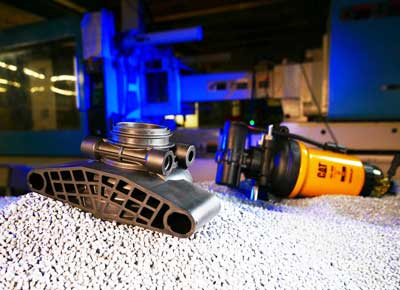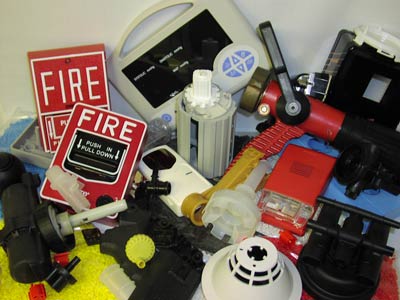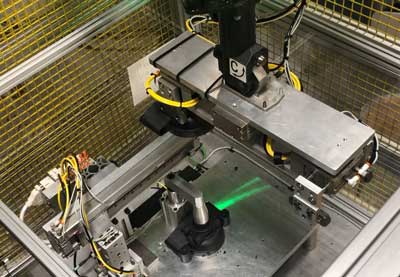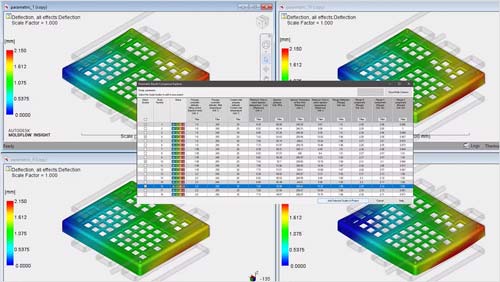 Today, manufacturers are constantly looking for effective ways to reduce costs while improving product performance and production efficiency. One way to achieve this is by shifting from traditional metal parts to thermoplastic ones.
Today, manufacturers are constantly looking for effective ways to reduce costs while improving product performance and production efficiency. One way to achieve this is by shifting from traditional metal parts to thermoplastic ones.
There are several advantages to doing this besides cost reduction, such as increased design flexibility and reduced part weight. However, not all components will qualify for this change. There are many considerations that must be made before making the switch. Today, we’ll look at the benefits and limitations, as well as the steps to make this happen.
What Are the Benefits of Switching?
Let’s start by looking deeper into the advantages of switching:
- Design Flexibility – the injection molding process allows for complex geometries and intricate details that may be difficult or expensive to achieve with metal.
- Cost Efficiency – despite potentially high up front tooling costs, the cost per part is often lower due to faster production time and reduced material waste.
- Corrosion Resistance – many thermoplastics are resistant to corrosion, making them ideal for parts that will be subject to harsh environments such as high humidity or salinity.
- Reduced Assembly – since plastic molding offers better design flexibility, multiple metal parts can often be consolidated into a single molded part. This reduces assembly time and costs.
- Weight Reduction – this one is pretty straightforward since it’s well known that plastics are lighter than metals. But the benefit of reduced weight depends on the application. For instance, for the auto industry, plastic parts could lead to improved fuel efficiency. For consumer products, reduced weight could result in easier handling. In almost all cases, less weight will also help reduce freight costs of completed parts.
What About the Limitations?
 Along with the advantages listed above, there are some potential drawbacks that must be considered. Selecting the material that meets the performance requirements of the application is crucial – since thermoplastics vary in their properties and performance characteristics.
Along with the advantages listed above, there are some potential drawbacks that must be considered. Selecting the material that meets the performance requirements of the application is crucial – since thermoplastics vary in their properties and performance characteristics.
- Strength/ Durability – although many high-performance thermoplastics can match metals in strength, they may not be suitable for certain applications, particularly those subjected to high stress.
- Temperature Resistance – thermoplastics might not perform as well in high-temp environments due to their have lower melting points when compared to metals. So be mindful of the maximum temperatures a part may be exposed to when selecting the material.
The Process of Converting from Metal to Plastic
Now that we have reviewed the benefits and limitations, let’s look at the process to make this happen. Every step is critical, from design evaluation, material selection, prototyping and full-scale production:
Part Design
Converting to a thermoplastic part often requires a redesign to take full advantage of the benefits that plastic injection molding brings. Key design features include:
- Wall Thickness – injection molded parts should have uniform wall thickness to ensure proper filling and cooling, unlike like metal, which can have varying thicknesses.
- Ribs and Gussets – provide structural support needed to maintain strength and rigidity, without adding significant weight.
- Draft Angles – help facilitate easy ejection from the mold.
- Undercuts and Threads – although these features can be molded, they typically require more complex tooling. In many cases, they can be avoided with a redesign. Just be sure that eliminating them will not cause part performance issues.
- Tolerances – Thermoplastics have different shrinkage rates compared to metals, so it’s important to account for this in the design to ensure proper fit and function.
Material Selection
The importance of selecting the right material can not be understated. The selected thermoplastic must meet the mechanical and thermal property requirements of the particular use. Chemical resistance is also a consideration if the part will be exposed to chemicals or solvents that could degrade the material. For visible parts, aesthetics such as color, finish and texture become important. And of course there’s the big one: cost. Balancing cost against performance can be a tricky equation, so evaluate carefully and remember to prioritize safety as a requirement.
[Link to Material Selection Blog]
Prototype & Test
This important next step allows you to identify any design or material before going into production. Be sure to use a reliable prototyping method such as 3D printing or rapid tooling where appropriate. Once your prototypes are ready, they’ll need to undergo functional testing. This needs to be done under real world conditions to ensure that the part meets performance requirements. If the part isn’t ready for prime time, make adjustments and repeat the prototyping until it is.
Tooling and Manufacturing
Once the design and material have both been finalized, the next step is to create the injection mold and begin production.
- Mold Design – please don’t cut any corners here. Work with a reputable and experienced mold designer to develop a mold that accommodates the part’s geometry, material flow, and cooling requirements. Choose the best mold material based on the expected production volume and part complexity. Generally speaking, steel molds are durable and better for high-volume production, while aluminum molds are more cost-effective and ideal for lower volumes. Regardless of the decision, also remember that tooling needs to properly maintained and stored for maximum performance and longevity.
- Injection Molding Process – make sure that you are working with a molding company that will optimize the injection molding process parameters such as temperature, pressure, and cycle time, to ensure consistent part quality.
Quality control measures are equally as important. These procedures should be in place to monitor part dimensions, surface finish, and mechanical properties throughout the production process.  Post-Processing and Assembly – some parts may require post-processing or assembly steps. These include finishing, such as painting, coating, or surface-treating to achieve the desired appearance or performance.
Post-Processing and Assembly – some parts may require post-processing or assembly steps. These include finishing, such as painting, coating, or surface-treating to achieve the desired appearance or performance.
If the component is part of a larger assembly, consider how it will be joined with others. Thermoplastic parts can be welded, bonded, or mechanically fastened. Certain injection molding suppliers, such as PDI, can provide in-house automation assembly services to help increase production efficiency and reduce turnaround time.- Inspection – as part of any quality control program, final inspections must be conducted to ensure that the parts meet all specifications and quality standards.
Conclusion
Converting metal parts to plastic injection molded ones can offer significant advantages in terms of cost, weight reduction, and design flexibility. However, the process requires careful consideration of the part’s performance requirements and operating environments. These factors should be your guide through the phases of design, material selection, prototyping, and manufacturing. By doing so, you can successfully navigate the transition and unlock the impressive potential of thermoplastic injection molding for your products.
If you’re considering converting your metal parts to thermoplastic injection molded parts, don’t hesitate to reach out to our team of experts to assist you


Comments are closed